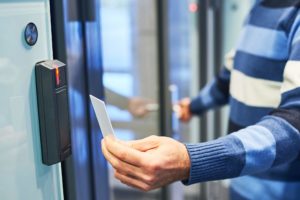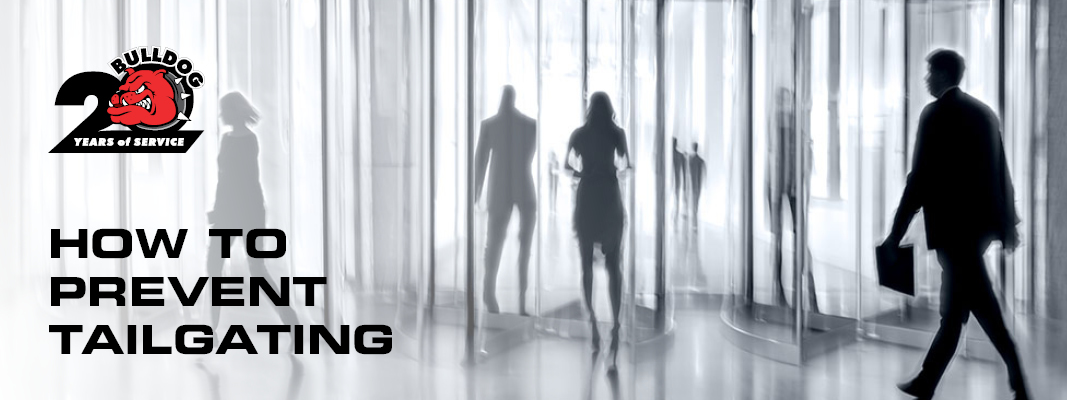Unauthorized entry into a building or areas of a building is a much more common occurrence than many realize. This action can take two forms: tailgating or piggybacking; and regardless of which form it may take, it can have serious consequences.
What Is Tailgating and Piggybacking?
Tailgating is the act of someone slipping in unexpectedly after an authorized person has opened the door. Similarly, piggybacking occurs when an authorized individual opens and holds the door for someone who may or may not have the proper credentials. When these actions happen, a secure access point loses its purpose and the building, occupants, and equipment are put at risk.
Tailgating can happen in a variety of ways, including:
- An unauthorized person gains entry to a building by following someone with proper credentials.
- An unauthorized person joins a large crowd who are authorized to enter but not supervised.
- An unauthorized team member gains access to an internal building area by following someone with proper credentials.
How to Prevent Tailgating

Tailgating can have many consequences, including theft of valuables, vandalism, and stolen intellectual property. The good news is that it can be prevented through anti-tailgating strategies, which ensure only those who are meant to be in your building are allowed access. Here are some actions you can take to prevent tailgating.
1. Staff Education
It’s important to outline the risks that come with tailgating and why staff should not allow someone to enter behind them. Developing employee policy and procedures about tailgating will enable your staff to prevent unauthorized access, and address scenarios when they happen.
2. Managed or Hosted Access Control
Installing a managed or hosted access control system helps to ensure that only authorized personnel have access to your building or specific areas. Through the management system, you can set different clearances for each person to restrict and track access. Although this helps, it may not stop someone from holding the door open for the next person, which is why staff education is critical.
3. Visitor Badges
Ensure that all visitors and temporary workers wear identification that indicates that they are authorized to be in your building. This is an important tool in helping employees easily identify unauthorized people by their lack of visitor badge.
4. Security Camera System

An integration with a security camera system that monitors entry points and secure rooms, will both act as a deterrent and help to identify an intruder. Additionally, with many regions requiring verification for police response, monitored video provides the benefit of security event confirmation. Camera systems may be further integrated to analyze the event, and determine if more than one person entered during a valid access. This would cause an unauthorized access analytic driven alarm to alert security to tailgating or piggybacking scenarios within your facility.
Learn More
- How to Choose the Right Access Control System
- Tech Feature: Kantech hattrix
- Is Access Control as a Service Right for You?
Contact Us

For 20 years, Bulldog Fire and Security has been an expert in Access Control Systems installation, having installed a variety of systems in numerous applications across Southwestern, Ontario.
To learn more about Access Control Systems and the role they can play in your building’s security, call us at 1 866 670 1590, email info@bulldogsecurity.ca, or fill out the contact form below.

